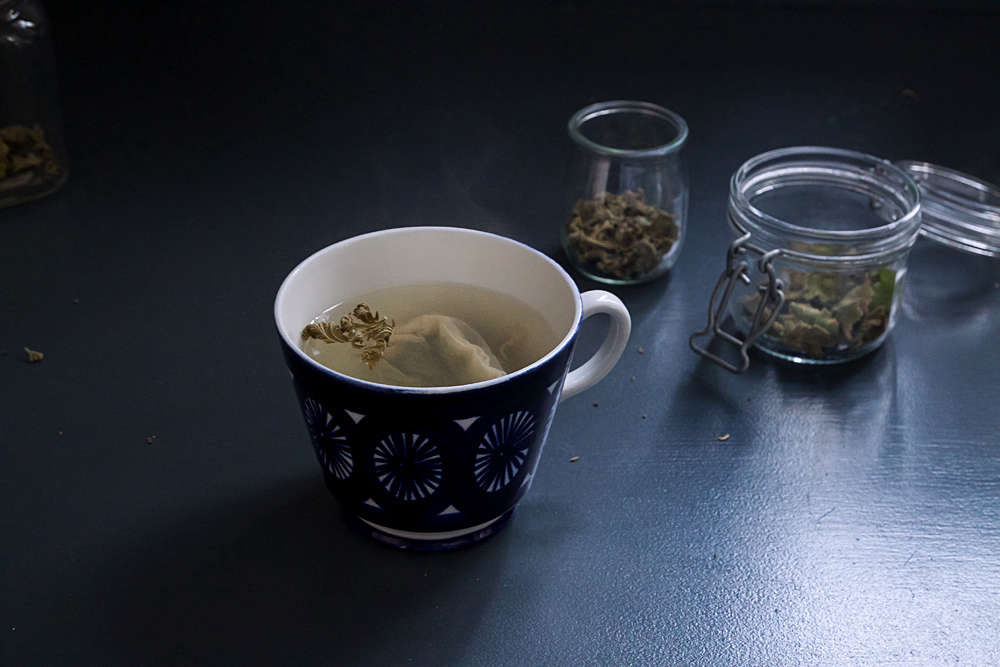I’m like the crazy cat lady of scented geraniums. Ever since I discovered these aromatic plants, which are not geraniums at all but, Pelargoniums, (See:
Scents and Sensibility: The Scented Geranium is Spring’s Must-Have Plant), I’ve become completely obsessed.
My favorite use for my growing collection of fragrances—which now includes mint, lemon, rose, lavender, and citronella—is in the kitchen. Less overwhelming than many oils or other flavorings, Pelargonium’s subtle scents have herbal overtones, which lend more complexity to my recipes. (See Recipe: Tea Cake with Meyer Lemons and Rose Geraniums and DIY: Summer Cocktail with Rose Geranium Simple Syrup.) My only problem is, I have more leaves than I can possibly cook.
Ergo, I have now taken to drying the leaves of my Pelargoniums to make sachets and other things. Here’s how:
Photography by Justine Hand.
Above: Shaggy Pelargoniums in desperate need of a trim, a perfect excuse to harvest some leaves.
Step 1: Clip Leaves
Above: Using sharp shears, cut off a leaf from a Pelargonium just above a growth point.
Step 2: Remove Stems
Above: Remove the leaves from the stem.
Step 3: Dry the Leaves
Above: Place leaves on a drying rack so that they don’t overlap.
Above: Leave in a cool, dry, dark space for about a week. You can also use a dehydrator, set to about 100 degrees. This method takes one day.
Above: Dried leaves are no longer green and should feel brittle or “crispy,” as my son says. They should crumble in your hand.
Step 4: Store the Leaves
Above: Store dried leaves in glass jars for use in the kitchen. Or to make a sachet, place them in a muslin bag and crush.
Step 5: Sachets
Above: You’ll get extra points with guests for your custom-scented pillow sachets. Try mixing different geranium scents or other herbs to create varied aromas. The sachet above is made from rose and lavender Pelargonium. Heavenly. I also like lemon-scented geraniums with a bit a balsam fir. You can also use dried Pelargonium leaves to subtly perfume stored garments and linens, or to freshen your winter boots. Or employ them as a alternative to moth balls.
Step 6: Make Tea
Above: Bonus: Steep dried Pelargonium leaves in boiling water for an aromatic herbal tea or inhale the steam for a mild decongestant. (Excuse to purchase a ginger-scented Pelargonium? You bet.) Or sprinkle a few leaves in the bath for an aromatic spa.
N.B. Want more creative garden concoctions and DIYs? See:
- How to Eat a Wreath: Fir Sugar for the Holidays.
- DIY: Eco-Friendly Fire Starters.
- DIY: How to Make a Bouquet Garni.



















Have a Question or Comment About This Post?
Join the conversation (0)